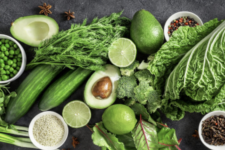When are we healthy – and do we actually have a clear definition of health?
It is important to realise that health is a relative concept. Some things are healthy for all of us, while other things are only healthy for some. The degree of health depends upon many aspects. Chocolate, for instance, is unhealthy if you eat one kilo a week but healthy if you eat 100 g of the dark type with a high cocoa content. Milk is healthy for people living in our part of the world, but Asian stomachs, on the other hand, do not tolerate milk.
Health does not seem to have any upper limit nowadays. It is as if everything can become even healthier. Like never before people are searching for a miracle in the service of health – the thing that gives us a perfect skin, a slim body and a perfect life by a stroke of magic.
But health is an odd character because it moves and never settles to be content. What was healthy last year is not necessarily healthy tomorrow. The boundaries of health are moving. What works, or does not work, is constantly being debated. There are still many things science does not know.
Health is everywhere
The time we live in dictates that a healthy life is also the prerequisite of a good life. And perhaps the very reason why people strive so much for health is the fact that health is constantly being proclaimed as the key to a good life. We must all become healthier. “But exactly how healthy?”, one might feel tempted to ask. Health is the ideal, and if you, or your company, do not strive for health, you are out of tune with today’s ideals. Once it was all about not getting ill; today we must not only be healthy but ideally also fit.
Health is the fashion
The quest for health nowadays has taken on an almost religious nature. Health is no longer just a physical matter. Health has become moral. The healthier an individual is, the better a person that individual is. The more you can deny in the service of health, the more successful you appear to be. If you are wise, you must also be healthy. Well, nobody says it explicitly, and the reality is quite different, and yet it can be read between the lines of today’s health messages, implicitly in the many recommendations and in our perception of other people (especially among the younger and well-educated generations). See, for instance the following link about thoroughly healthy millionairesses who promise you success and wealth if only you take charge of your body. (www.kernesund.dk)
The quest for health is not just a concern for the individual – it is a concern for society. Institutions, businesses and food manufacturers are presently focusing their efforts on contributing to the promotion of health. Especially food businesses have put health on the strategic agenda these years. Millions are put into research, product development and communication for the sake of health. Health is a must when profiling a modern business.
The sharp focus on health is not likely to decrease in any near future. Health is hip, cool, very necessary and not least the solution to many of modern society’s welfare problems. But whereas previously solutions to a healthier and slimmer life was characterized by being one common story with one solution, it now seems as if the field is becoming increasingly differentiated, and the individual finds his/her own way to a healthier life. Some people prefer hard exercise, others moderate. Some people avoid fat and sugar, others eat small portions. There are several ways to choose from.
Who is responsible?
A common theme for all health discussions is the question of what can be done to improve public health and who is responsible? This is an essential societal question, i.e. the actor/ structure dilemma. To what extent is health people’s own responsibility – and to what extent are people’s health habits and food preferences determined by the context in which they live? There are no definite answers to that dilemma. This is a fundamental societal conflict. The answer depends upon who you ask, and through which glasses they view the question. It is important to realize, however, that the actor/structure dilemma is the core of the health debate. If you do not understand this dilemma, you fail to understand the “battle” for health.
For the last decade there has been a strong focus on the individual and individual choices when it comes to health. The headline “You become what you eat” perfectly demonstrates this. However, this trend is changing as the structural level is playing an increasingly important role in the debate, and stills more people point to the fact that crucial structural changes are needed if the general public health is to really be improved. (See: Bente Halkiers, Associate Professor at Roskilde University, “Consumption Challenged”).
“Global” health trends
As mentioned above, health and the quest for a healthier lifestyle are dominant in modern everyday life and in people’s conscience. We all know the unfortunate statistics that give evidence of the state of public health. But how do we achieve improved health and increased life quality? The answers are many. Here are some examples of global health trends and headlines.
- The natural way – Nature has the answer. Nature is “innocent”, nature is sacred. The natural choice for the individual consumer is often the same as the healthy choice (this is not always the case for science that has a somewhat different perception of what is “natural”). To consumers natural things almost exclusively evoke positive associations. Health is e.g. a decisive argument when consumers actively select organic products.
- Staying young – The quest for youth and vitality through a healthy lifestyle, healthy food and special diets. Low-calorie, no-sugar and raw-food are examples of diets that promise you a longer life, a younger body and a youthful appearance.
- Immune system – Through a healthy lifestyle, a varied diet, exercise, good sleep, fresh air and other healthy habits you can maintain your immune system at its peak. If you eat correctly, you keep your stomach and digestion in balance, if you wash your hands, you avoid viruses etc. Some people boost their immune system with food supplements like cod-liver oil. Probiotics are also one of the means to a healthier stomach.
- Sleep – A good night’s sleep strengthens the body, energizes you and gives you an inner calm. Lack of sleep affects your concentration, metabolism and general well-being. The better the sleep, the longer the life.
- Meditation – Meditation has become a popular way of achieving an inner calm, reducing stress and increasing well-being in a busy life. Meditation also represents a place to breathe freely and escape expectations and demands for efficiency.
- Mindfulness – Mindfulness means living in the moment, feeling the inner self and learning how to keep an overview. Mindfulness provides the opportunity of reorientation and seeing everything in a clear, new perspective.
- Exercise – The more exercise, the better. Today exercise is in the focus when it comes to fighting the global fat epidemic. Previously the debate focused on calories and how to avoid getting too many of them. 30 minutes of moderate exercise a day prolongs the lifetime of a 30-year old man by 3 years, and for a woman the gain is 4.5 years.
- DSAE – gain control of the four factors Diet, Smoking, Alcohol and Exercise. DSAE is a scientific formula for a healthier life according to which you live longer and preserve a youthful look without having to live fundamentally different from the norm. (Sandheden om sundheden (The truth about health) by Professor Bente Klarlund)
- Body – A sound mind in a sound body. A successful person in an attractive body. The body is our brand and a signal to the surrounding world. Today your appearance determines how you are perceived by the surroundings. In other words, the flesh has conquered the spirit in a body-conscious world. The objective is to avoid physical degeneration.
- Beauty (Skin) – A beautiful skin is achieved through the diet. Eat green, drink green, eat plenty of fish and eat healthy oils. Oils are hot: flaxseed oil, coconut oil, fish oil etc. Provide moisture to your skin through your diet. Alternatively, apply the oils to your body. Almond oil, sea buckthorn oil, sunflower oil etc. Foods that make your more beautiful: berries, vegetables and polyunsaturated fatty acids. Drink plenty of water and get enough sleep. (For further details, see: www.thorbjorg.dk)
Health threats in time
- Obesity – 1.6 billion adults are obese. 20 million children below the age of 5 are severely obese across the world. In the western world the number of obese persons has doubled over the last 20 years. (WHO)
- Inactivity – The Danish National Board of Health estimates that 30 to 40% of the adult Danish population is not physically active
- Lifestyle diseases – 40% of all diseases are caused by an unhealthy lifestyle. That figure is expected to increase to 70% in 2020. (WHO)
- Meaninglessness – The number of lonely people is growing while self-injuring behaviour such as cutting is becoming increasingly common among young people. Which truth should form the basis of one’s life? A growing number of people choose the truth offered by a health apostle
- Mental disorders – 120 million people across the world suffer from depression. 200,000 Danes suffer from depression. 15% of all Danes will develop a depression at some stage in life. 250,000 Danes suffer from anxiety attacks. 350,000 Danes take mood stabilizers (WHO, the Danish Consumer Council, The Danish Mental Health Fund)
- Stress – 10-12% of the Danish workforce suffers from stress for periods of time. 28% of EU’s workforce shows symptoms of work-related stress. (WHO, the Danish Working Environment Information Centre)
- Smoking – 1.3 bn. people smoker world-wide. A fourth of the Danes above the age of 13 smoke every day. 14,000 Danes die every year as a result of smoking. Bad oral hygiene, loose teeth, bad breath, bad skin, respiratory problems and poor lungs are some of the inconveniences of smoking.
- Ageing – The old person, the ageing body and the ageing mind have a low status today. Therefore there is a substantial will to fight age! Miracle cures, diets, food supplements, skin creams, exercise and witchcraft are some of the means used in the fight against time.
- Allergies – The number of people who are diagnosed with an allergy has soared in recent years. The same is the case for people diagnosed with food allergies. According to the Journal of the Danish Medical Association one in three families has a food allergy. 3% of the Danish population is allergic to milk. That number is 25% in Europe and 100% in some places in Asia (the monthly journal for practical medical work). Allergies have also become modern, and Professor Bente Klarlund states that “allergy” can also be used as a good excuse for a special diet or idea.
- Orthorexia – An obsession with health and healthy food to a degree that affects the patient’s lifestyle and social life. The patient is attracted to special diets and only eats special foods. (Orthorexia is not the same as bulimia and anorexia, but all three phenomena are characterised as a form of eating disorder.)
- Food trends
- Pure Food – Food should be pure and natural. Fresh and preferably produced locally. Limited processing and preferably no additives. Organic food is still popular but for those people who want it purer, biodynamic food is a real alternative.Certain food colorants may lead to hyperactive children, and pregnant women were recently advised against drinking light soda because sweeteners are suspected of causing premature births. Pure Food is the essence of New Nordic Diet.
- New Nordic Diet – The Nordic countries are known for purity, freshness and simplicity. This is also true for Nordic food. An increasing number of consumers, restaurants and catering businesses are now asking for food with such qualities and characteristics. New Nordic Food can prove to be the answer to this demand. (www.nynordiskmad.org)
- To Go, Food service – People of today need to get a lot of things done in a limited amount of time. Therefore they do not have time to cook themselves so often and increasingly eat food prepared by others. Traditional cooking of everyday food consisting of raw materials, semi-products and convenience is increasingly being replaced by meal solutions.
- Back to nature (organic) – Food originates from nature. Therefore many people prefer their food as natural as possible. The general perception is that nature is good by definition. “Natural” food = “real” food. A cow grazing on the pasture has a more “natural” life and therefore its milk and meat is better and more “natural”.
- Authenticity – Decades of industrial food has alienated the consumer from food, nature, raw materials and the producer. Focus is now on “original” raw materials. Where does the food come from, under which conditions has it been produced and by whom?
- Sustainability – Production of food must be sustainable for the sake of Earth, biodiversity, people and health. Some people believe that food which is not produced under sustainable conditions is bad food. Every food manufacturer that wants to enjoy high esteem (profile) among consumers must apply a sustainable approach.
- Biodiversity – For decades the agricultural and food sectors have focused on efficiency improvement and standardisation at the expense of biodiversity and the range of different food products. For instance, nowadays most milking cows around the world are of the same breed, and the selection of onions in stores does not nearly reflect nature’s diversity of onions. In the future there will be much more focus on biodiversity and a much larger and more diverse range of products.
- Food with benefits – Super food – super fruit. Food with a maximum nutritional content that improves your health. Oils, broccoli, nuts, acai, seaweed, probiotics, “naturally” enriched foodstuffs.
- Polarisation of food consumption – Losers eat loser’s food, winners eat winner’s food. A general polarisation is currently taking place as the economically advantaged part of the population eat better and healthier food whereas the economically disadvantaged part of the population still eat many empty calories of an inferior quality. The health trend seems to pass by the latter group.
- Slow food – Food is trendy. Making home-cooked meals, preserving berries and baking fancy cakes is cool, hip and demonstrates reserves of energy and time. The many cookbooks and TV cooking programmes mirror the trend quite clearly. We may eat a lot of food prepared by others some days during the week, but when we have time off, have guests for dinner and need life quality, more and more people engage in good cooking. Food also represents solidarity and love. What is food that has not been prepared with love?
- Slam food – The discount stores live in clover these days, and there are still many consumers who are not concerned about food; they just want a cheap and quick solution. Therefore production of industrial chicken living under terrible conditions is still quite common. Powdered food and cheap ready meals with a high fat, sugar and salt content and little nutrients are still in demand. The price of food is still important for many people – including people who, in principle, could afford to pay e.g. 20% more for their food.
- Identity food – Food is increasingly becoming a lifestyle. Food is used for the purpose of personal promotion and represents a status symbol, just as cars, clothes, book collections and electronic gadgets. Your food preferences reveal your attitude and values and tells who you are.
- Individual diet – Eat according to your genetics and blood type. A person spends only 2400 calories a day on the things that are best for him/her
Other relevant trends: private-labelling, fun food, multi-ethnic food, protein for breakfast, less is more, Functional food, no more light products.
Food ideas (fanatical trends)
In recent years we have witnessed a wave of different diets in the quest for a good and healthy life. There are many versions and yet more to come. Some of these recommendations/ diets are based on scientific facts while others seriously lack supporting research results and are instead based on personal experience or convictions. Here is a selection of the most popular diets/food ideas of today:
1. Low Calorie – A diet of 800 calories a day slows down your ageing process, improves your blood pressure, reduces your need for sleep and energizes you. However, it has the drawbacks that in the long run you will lose muscular strength, and if you are a woman, you may stop menstruating. Therefore the diet is mostly recommended for middle-aged or older people and only for short periods of time. Some people stay on this diet for years, though.
2. Raw food – The fresh, organic raw materials must not be prepared by temperatures above 42 degrees and generally be processed as little as possible. The advantage is that the vitality and nutritional value of raw materials are preserved, thereby increasing the health value of a meal. Standard dairy products and bread do not live up to this diet. (www.sunfood.com & www.rawfoodbogen.dk)
3. Detox – detoxification of your body. A detox diet normally takes 1-3 months depending on the method. The effects of the diet is a higher energy level, cleaner and more beautiful skin, improved digestion, better concentration and an inner calm.
Vegetarian – A growing number of people choose to become vegetarians. In Denmark 1-2% of the population are vegetarians, in Great Britain the figure is 9% and in Germany 8%. Consideration to animals has always been of great importance for people deciding to become vegetarians. In recent years the criticism of modern farming and animal production has become a decisive argument (Jonathan Safran, Om at spise dyr (About Eating Animals) and www.vegetarforening.dk).
5. Fit as a fiddle – Quit sugar, dairy products and gluten and get a new life. Improve your mood, gain more energy, avoid diseases and become happy (www.kernesundfamilie.dk).
6. No Milk – Lactose intolerance is the inability to metabolize lactose, because of a lack of the required enzyme lactase in the digestive system. It is estimated that 75% of adults worldwide show some decrease in lactase activity during adulthood. The frequency of decreased lactase activity ranges from as little as 5% in northern Europe, up to 71% for Sicily, to more than 90% in some African and Asian countries.The last few year it has become more popular to quite milk, even though you are not lactose intolerant. Different “health-ideas” claim that milk is unhealthy for people (only people drink milk all life long) To quite milk is good for your skin, astma, migraine, autism etc.
7. No Sugar – No sugar, better mood, increased physical well-being, more beautiful skin, deferred ageing, fewer mood swings; in short: a better life (www.thorbjorg.dk). “On the basis of the studies completed, there is no scientific evidence to support that children’s behaviour tends to become more hyperactive after having consumed large amounts of sugar.” (The importance of nutrition for learning and behaviour in children), Department of Human Nutrition, Faculty of Life Sciences, Copenhagen University)
8. No wheat, Gluten-free – (Coeliac disease) For some people (persons allergic to gluten) gluten slowly breaks down the villi lining the small intestine, which makes it harder to digest proteins and interferes with the absorption of nutrients. This may cause different symptoms such as fatigue, joint and muscle pain, nausea, eczema, bloating, constipation and diarrhoea. Some people who do not suffer from the allergy may choose to avoid wheat anyway.
9. Low sodium – A low sodium diet is a diet that includes no more than 1,500 to 2,400 mgs of sodium per day. The human requirement for sodium in the diet is about 69 mg per day, which is typically less than one-tenth as much as many diets “seasoned to taste”. For certain people with salt-sensitive blood pressure, this extra intake may cause a negative effect on health.
10. Atkins – The Atkins diet is about eating plenty of protein and fat but almost no carbohydrates. That means lots of fat meat, cheese, cream, butter, mayonnaise salads, nuts and oils but no or only very limited amounts of bread, rice, pasta and potatoes. (www.atkins.com)
11. Stone Age food – Our contemporary diet is completely out of balance with our genetic needs. In the Stone Age about 10,000 years ago all people on Earth were hunter-gatherers and lived on wild animals, fish and shell fish, vegetables, roots, fruits, nuts and clean water. They did not eat cereals such as rice and wheat – which forms the basis for the diet of many modern cultures – and nobody ate dairy products or drank milk except for breast milk as babies. Before we began farming our health was incredibly strong. (Tor Nørtranders, Menneskeføde (Human Food) & http://www.alun.dk/sund-kost/stenalderkost-din-fremtid.html)
Trendy food – food for a healthier life
Smoothies – Drink your way to a more beautiful and healthier life. Drink your way to a slim body, more energy and a beautiful skin. Smoothies made from fresh vegetables, fruits in rainbow colours and healthy, delicious oils. Buy them at the juice bar or make them at home.
Whole grain – Wheat, rye, barley, oat, corn (dried), millet and rice. Danes’ whole grain intake has risen by 10% from 2005-2009. Whole grain products such as bread and porridge satisfy well and help maintain a stable blood sugar so you reduce the risk of eating too much and become overweight if you eat whole grain. Whole grain products helps digestion, prevents constipation and lifestyle diseases like cardiovascular diseases, diabetes and obesity.
Green tea – Over the last few decades, green tea has been subjected to many scientific and medical studies to determine the extent of its long-purported health benefits, with some evidence suggesting that regular green tea drinkers have lower chances of heart disease and developing certain types of cancer. Although there is no scientific evidence that plain green tea can produce weight loss, a green tea extract rich in polyphenols and caffeine has been shown to be useful for “obesity management”, since it induces thermogenesis and stimulates fat oxidation. (Wikipedia)
4. Matcha – some people refer to Matcha as the ultimate green tea. When you drink Matcha you consume the leaves, unlike other green teas. For this reason Matcha contains, by volume, higher concentrations of catechins and vitamins. Matcha is also used as an ingredient in everything from smoothies to fashion macaroons, cookies and chocolate.
5. Seaweed – You would find it shocking to know that according to statistics people in Japan are healthier and actually live longer. Seaweed is a staple food in Japan. This is the key factor in their health and their long-levity. Seaweed contains higher contents of fibre than vegetables, more protein than meat, and more calcium than milk. Seaweed is actually a good ingredient to put into everyone’s diet.
6. Raw fish – Raw fish has become increasingly popular in recent years. Popular dishes with raw fish are sushi, salmon tartar, gravad fish etc. But raw fish should be treated with care.
Spirulina – The UN has referred to the spirulina alga as the best food product of tomorrow. Spirulina has proven to possess some fantastic qualities that benefit the body. Spirulina Platensis is a microscopic alga, which lives in fresh water. It contains 18 amino acids, including all the 8 essential amino acids, which can only be absorbed through nutrition. The Spirulina alga is grown through photosynthesis and is in perfect balance with nature. Spirulinex is produced from 100% spirulina alga.
Oils – 1-2 tablespoons of the right oils can help you become healthier, slimmer and improve your looks. Your body needs two essential fatty acids: linoleic acid (also known as omega 6) and alfa-linoleic acid (also known as omega 3). If your food contains too little of them, it increases the risk of various diseases (including cardio-vascular diseases), bad appetite regulation and fat burning as well as a dry and dull skin. Your body functions better and you look better when you get enough of these oils. Fish oil, cocoa nut oil, flax seed oil, almond oil etc.
Sprouts – Fresh sprouts are full of vitamins, minerals, enzymes, amino acids, antioxidants and – if they are exposed to light – chlorophyll. Sprouts contain plant fibre and lots of fluid, which is good for digestion. It is becoming increasingly popular to eat sprouts and to grow them at home. Popular sprouts: broccoli, lucerne, sunflower, sugar snap sprouts etc. (www.friskespirer.dk
Acai – The Acai berry is a small black berry. The Acai berry has a very high amount of antocianine, a substance that helps the body fight of free radicals or toxic substances in the environment.
Aronia – The super berry Aronia is a true health bomb. Loaded with vitamins and antioxidants the berry strengthens the body’s immune system and slows down the ageing process. The Aronia berry is called “the world’s strongest antioxidant” due to its remarkably high content of vitamins and oxidants. Compared with the blueberry, which is regarded as one of the healthiest berries, the Aronia berry contains three times as many antioxidants. (Also remember: Goji, Noni, gauarana, blueberries, blackcurrant)
12. Nuts – Most nuts, including walnuts, almonds, peanuts, and pistachios, have been shown to have many health benefits when consumed in moderation. Walnuts are a particularly rich source of omega-3 fatty acids and may be better at lowering cholesterol as compared to other nuts. The FDA has approved heart health claim for almonds, hazelnuts, peanuts, pecans, pignola pine nuts, pistachios, and walnuts. Brazil nuts are very rich in selenium, a powerful antioxidant that helps neutralize harmful free radicals. In a recent study they were shown to lower the risk of breast cancer.
Other types of trendy food: macaroni, cup-cakes, soups, chocolate, root vegetables, almond milk, sea buckthorn, cereals, (wheat).
Conclusion
The focus on health has not weakened, on the contrary. But whereas previously the health debate had some clear and general messages such as less fat, fewer calories and more exercise, the current health debate is characterized by an undergrowth of ideas, directions and messages, each with their own recipe for a healthier live. In this context it is worth remembering that people are different. What works for one person may not always work for another. A growing focus on the individual and increasing research within genetics and food products mean that tomorrow’s health solutions, diets and the meals we eat become still more individualized.
Another distinct shift in the name of health is that whereas previously the health focus was primarily on physical aspects, the fat and the body, today’s health debate is characterized by a more holistic approach – it is not just the body but the entire human that must become healthier, better looking and happier. And the road to a healthier life today is not only to be found within the established healthcare system; it also exists within the alternative world. Still more people search the truth through their believes and what makes sense to them.
Improving the general health in the future requires more self discipline of each person. The individual must be capable of saying “no thanks” and get up from the sofa and start exercising. Those who are not capable of choosing a healthier lifestyle may well become the “losers” of the future. And we are not talking about today’s sacred health ideal but more simple health based on recommendations by public health authorities and common sense. But the individual cannot cope with this task alone – one third of the population will be lost if the individual must set the course for development independently. Therefore there is a big need for major structural changes such as improved cycle paths instead of school buses, healthier food in schools (children must be raised with an awareness of health), taxes on unhealthy food products and VAT reductions on healthy foods. Similarly there is a need for businesses (food manufacturers) to offer and tempt people with delicious and healthy alternatives.
In short, we must and want to become healthier. But whether to achieve health through marathon races, yoga, exercise prizes, vegetable smoothies, yoghurt with probiotics, raw food or enriched food only time can tell. It is worth remembering that food is culture, and major cultural changes seldom happen at a dramatic pace and overnight. So even if we shall definitely eat differently in ten years, it will probably not be dramatically different.
Postscript
This was a brief outline of the health messages on today’s agenda and the food we must eat to become healthier. These health messages may not necessarily be familiar to all consumers, but they are messages formulated by the trendsetters in this field and are therefore trends that may, or may not, eventually end up on the dinner table in most homes.

 Twitter
Twitter Facebook
Facebook










